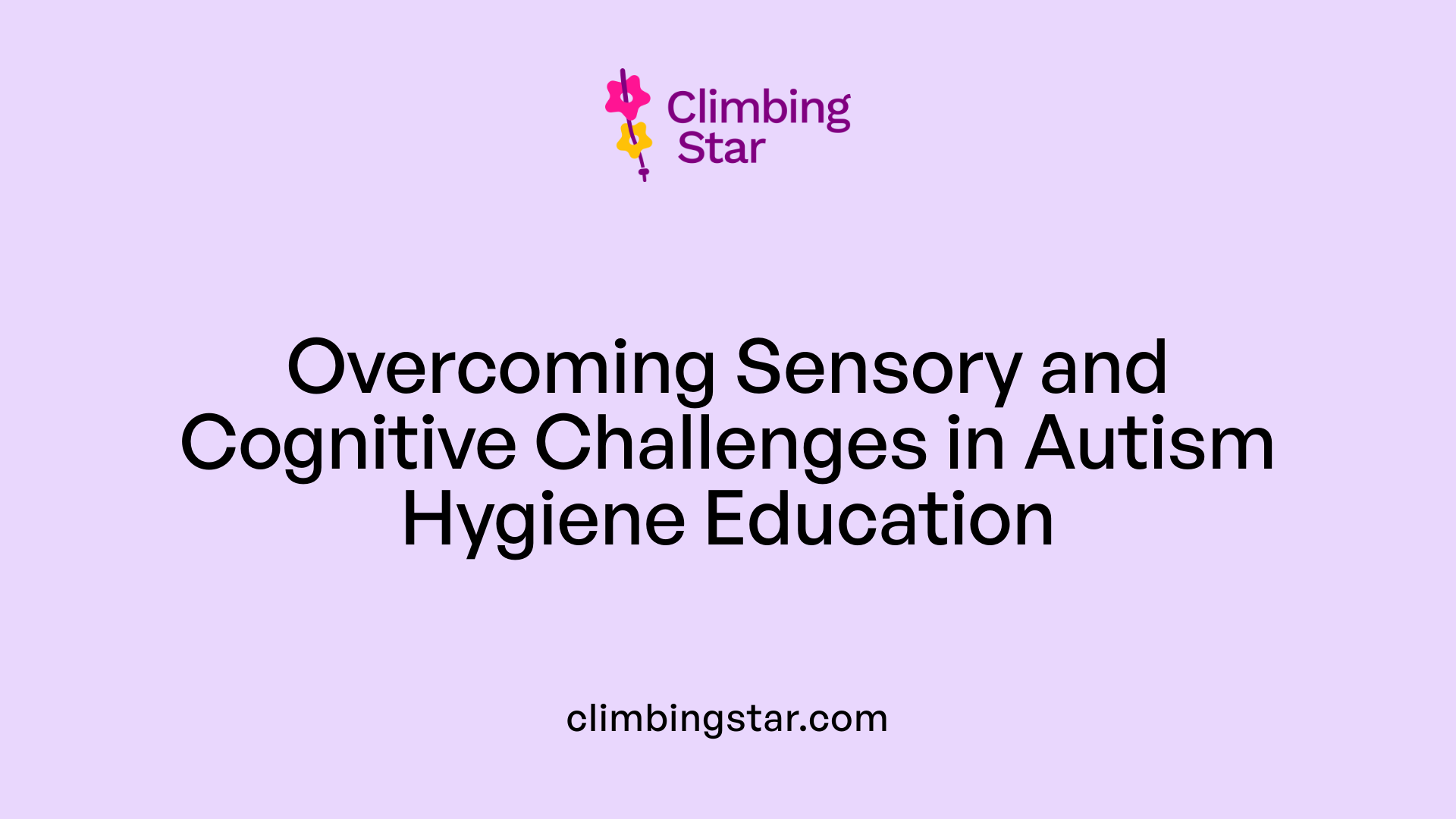Understanding the Importance of Hygiene and ABA Therapy
Hygiene is a fundamental daily skill that promotes health, social acceptance, and independence. For children with autism spectrum disorder (ASD), mastering hygiene tasks such as handwashing and showering can present unique challenges due to sensory sensitivities, difficulties with executive functioning, and language comprehension issues. Applied Behavior Analysis (ABA) therapy offers structured, evidence-based techniques that help these children develop essential hygiene habits by breaking tasks into manageable steps and providing consistent support. This article explores how ABA supports hygiene skill development in children with autism, practical strategies for parents and therapists, and ways to make handwashing and showering engaging and effective.
Applied Behavior Analysis (ABA) Therapy: Foundations and Role in Supporting Hygiene Skills

What is Applied Behavior Analysis (ABA) therapy and how does it support individuals with autism?
Applied Behavior Analysis (ABA) therapy is a scientifically validated approach designed to improve important life skills in individuals with autism spectrum disorder (ASD). It uses behavioral principles to encourage positive behaviors like communication, social interaction, and independence, while reducing behaviors that may hinder learning or social participation. ABA achieves this by applying strategies such as positive reinforcement and carefully analyzing the situations before and after behaviors occur. These strategies are often embedded naturally through play or daily routines to maximize engagement and practicality.
How does ABA support children with autism in learning hygiene skills?
Children with autism often experience challenges in hygiene tasks due to sensory sensitivities, executive functioning difficulties, and language comprehension issues. ABA therapy helps by breaking down complex hygiene tasks into small, manageable steps using techniques like chaining. For example, the process of washing hands is divided into sequential actions—wetting hands, applying soap, scrubbing, rinsing, and drying—each taught and linked together to foster independence.
What are the core principles and techniques relevant to hygiene teaching?
Key ABA principles such as positive reinforcement, prompting, and fading guide the teaching of hygiene skills. Prompting involves giving cues to help the child perform a task correctly, while fading gradually reduces these prompts as the child gains mastery. Visual supports, like pictures or social stories, complement these techniques by providing clear, consistent cues to aid understanding and routine development. The clinic emphasizes routines and structured teaching to help children form lasting hygiene habits.
Who provides ABA therapy and their roles?
ABA therapy is delivered by trained and certified professionals including Board Certified Behavior Analysts (BCBAs), Registered Behavior Technicians (RBTs), and licensed behavior analysts. BCBAs design and supervise individualized treatment plans, while RBTs implement these interventions directly with the child. Parents also play a vital role by maintaining consistent routines and using visual supports and prompting strategies at home, under guidance from ABA therapists.
Making handwashing fun and effective
ABA methods encourage making hygiene routines engaging to aid habit formation. For instance, singing the "Happy Birthday" song helps children wash their hands for the recommended 20-30 seconds. Using colorful soaps, accessible setups like stools, and incorporating songs or games encourages consistent practice of good hygiene, crucial for health and social acceptance.
| ABA Therapy Aspect | Description | Application to Hygiene Skills |
|---|---|---|
| Behavioral Techniques | Chaining, prompting, fading, reinforcement | Breaking down handwashing into steps, guiding execution |
| Visual Supports | Pictures, social stories | Aid comprehension and routine adherence |
| Providers | BCBAs, RBTs, behavior therapists | Design plans, implement therapy, guide parents |
| Parent Involvement | Consistency in routines, home reinforcement | Strengthens skills learned in therapy |
Challenges in Teaching Hygiene to Children with Autism

What sensory and cognitive challenges affect hygiene in children with autism?
Children with autism often experience sensory sensitivities that make certain hygiene tasks uncomfortable or overwhelming. For example, the feeling of water or soap on the skin might be distressing. Executive functioning difficulties can make it hard for them to plan, sequence, and remember steps involved in routines like brushing teeth or handwashing. Language comprehension issues also play a role: without clear understanding, following verbal instructions on hygiene might be challenging, hindering skill acquisition.
How do executive functioning and language difficulties influence hygiene learning?
Executive functioning challenges affect a child's ability to initiate and complete multi-step tasks independently. Without proper support, children might forget or skip steps during hygiene routines. Language comprehension issues can make communication about these tasks confusing. This means children may require more visual aids or demonstration to grasp what is expected, emphasizing the need for tailored teaching strategies.
What social consequences arise from poor hygiene in children with autism?
Poor hygiene can unfortunately lead to social stigma and isolation for children with autism. Since hygiene is closely linked to social acceptance, struggles in this area might affect peer relationships and opportunities for inclusion. Early intervention focused on developing hygiene skills can promote greater independence, thereby improving social experiences and self-esteem.
Are there any challenges or criticisms associated with ABA therapy?
ABA therapy, while evidence-based and effective in teaching skills like hygiene, has faced some criticisms. Historically, intensive ABA approaches were seen as rigid, focusing heavily on behavior normalization which some felt could undermine individuality. Concerns about stress and repetitiveness have been raised, especially by neurodiversity advocates. However, modern ABA practices have evolved to prioritize the child's interests and emotional well-being, aiming for respectful and personalized interventions to address these concerns.
Breaking Down Hygiene Tasks: The Power of Chaining and Routine

What is Chaining and How Is It Used in ABA to Teach Hygiene?
Chaining is a behavioral technique used in ABA therapy that breaks complex hygiene skills into smaller, manageable steps. For example, in handwashing, these steps include wetting hands, applying soap, scrubbing for at least 20 seconds, rinsing, and drying. Each step is taught individually and then linked together to help children with autism learn the complete task. This method promotes independence by making overwhelming tasks more approachable and easier to master.
Why Are Consistent Routines and Visual Supports Important?
Children with autism often benefit greatly from consistent routines. Predictable patterns reduce anxiety and help the child know what to expect each day. Visual supports, such as pictures or social stories, guide them through each step of hygiene tasks, reinforcing learning. These aids serve as clear reminders and help bridge difficulties with language comprehension.
How Do Prompting and Fading Enhance Skill Acquisition?
Prompting involves giving cues to encourage the child to perform hygiene steps, while fading gradually reduces assistance as the child gains proficiency. By carefully balancing support and independence, children develop confidence and can perform hygiene tasks on their own over time.
Why Are Repetition and Structure Essential in Forming Hygiene Habits?
Regular practice builds mastery. Structured repetition, supported by chaining and consistent routines, helps engrain hygiene habits, making them a natural part of daily life. For instance, frequent handwashing before meals and after using the bathroom becomes an automatic behavior when practiced within a reliable routine.
These evidence-based ABA strategies—chaining, routines, visual supports, prompting, and fading—work together to empower children with autism to develop essential hygiene skills, leading to increased independence and improved social acceptance.
Practical Strategies to Teach Handwashing and Showering to Children with Autism

What is the step-by-step process of teaching handwashing?
ABA therapy breaks down handwashing into manageable steps: first, teach the child to wet their hands; next, apply soap; then scrub all surfaces thoroughly for at least 20 seconds; rinse well; and finally, dry their hands. Using chaining, each step is linked progressively to encourage independence.
How can songs and fun tools help engage children?
Singing songs like "Happy Birthday" during hand scrubbing lets children keep track of the recommended 20-30 second duration in an enjoyable way. Adding playful elements such as interesting soap scents or colors and setting up a stool for easier access can transform handwashing into a fun routine, boosting participation and habit formation.
What are the recommendations for handwashing frequency?
Regular handwashing is essential before and after meals, after using the toilet, after interacting with animals, and following coughing or sneezing. Reminding children about these moments and incorporating them into daily routines supports hygiene and health.
How can bathroom setup be adapted for accessibility and comfort?
Using visual supports like pictures or social stories helps guide children through each hygiene step. Accessibility can be enhanced by providing a sturdy stool for younger children to reach sinks comfortably, making the space inviting and reducing sensory discomfort.
| Strategy | Description | Benefit |
|---|---|---|
| Step-by-step instruction | Breaking down tasks into smaller actions | Easier skill acquisition |
| Songs for timing | Using tunes like "Happy Birthday" during washing | Keeps children engaged |
| Routine reinforcement | Encouraging washing at key times | Builds consistent hygiene habits |
| Visual supports | Pictures and stories to guide procedures | Improves comprehension |
| Environmental adaptations | Adding stools, fun soaps, and comfortable setups | Enhances accessibility and comfort |
The Role of Parents and Caregivers in Supporting Hygiene Development

How caregivers can implement ABA strategies at home
Parents and caregivers play a crucial role in reinforcing hygiene skills taught through ABA therapy. They can use techniques like chaining, which involves breaking hygiene tasks into manageable steps and teaching each sequentially. Consistent use of prompting and gradually fading these prompts helps children move toward independence.
Using visual aids like pictures and social stories
Visual supports such as pictures and social stories are effective tools for assisting children with autism in understanding hygiene routines. These aids provide clear, concrete examples of each step, enhancing comprehension for children facing language or executive functioning challenges.
Importance of consistency and positive reinforcement
Maintaining consistent hygiene routines at home fosters predictability and comfort for the child. Positive reinforcement, such as praise or small rewards, encourages continued practice and mastery of hygiene behaviors, promoting independence and reducing anxiety.
Collaboration between families and ABA professionals
Ongoing communication with ABA therapists ensures that parents receive guidance tailored to their child's progress. This partnership helps adapt strategies as needed and aligns efforts between the clinic and home to maximize skill acquisition and maintenance.
Building Independence Through Supportive Hygiene Practices
Teaching handwashing and showering to children with autism is a vital step toward promoting health, independence, and social inclusion. Through the application of ABA therapy’s well-researched principles—such as chaining, prompting, and the use of visual supports—both professionals and families can help children overcome sensory and cognitive hurdles. Making hygiene activities accessible, engaging, and part of consistent routines reinforces skill acquisition and confidence. While challenges exist, ongoing collaboration between therapists and caregivers ensures respectful, individualized approaches that empower children with autism to master essential hygiene skills and thrive.
References
- Cleveland ABA therapists teach kids hygiene skills
- How to teach your kids handwashing
- The Controversy Around ABA
- Concerns About ABA-Based Intervention: An Evaluation ...
- Efficacy of Interventions Based on Applied Behavior ...
- Efficacy of Interventions Based on Applied Behavior ...
- The effectiveness of applied behavior analysis program ...
- Applied Behavior Analysis (ABA)
- Applied Behavior Analysis in Children and Youth with ...
- The Controversy Around ABA







